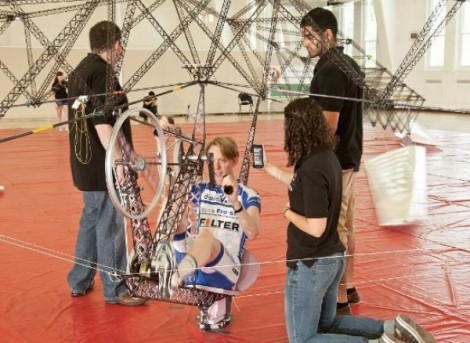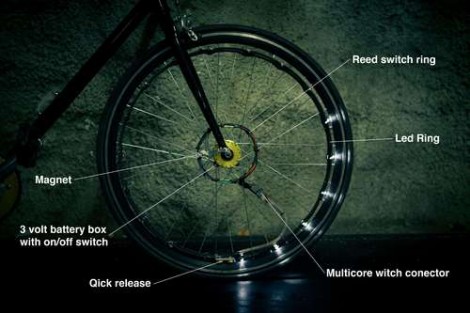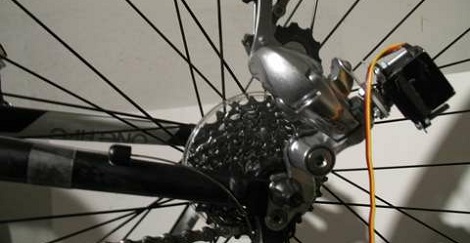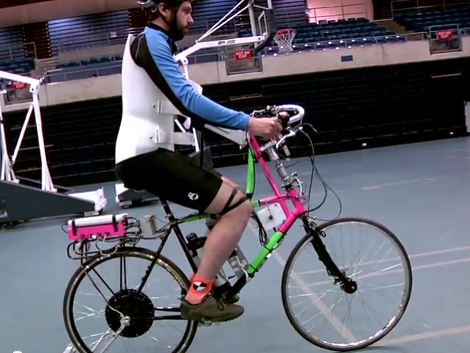
If you decide to fly into town on this bicycle-powered quadcopter your arms and legs really will be tired. That’s because this athlete had to give it his all to power the rotors through the foot pedals and the hand cranks. You can see just one of the rotors on the right side of the background. Yeah, this thing is big!
You’re looking at the Gamera II, a craft developed by students at the University of Maryland. About a year ago they were showing off the first version of the aircraft. With the passing of the year comes the breaking of world records as a different rider manages to keep it up for 50 seconds in the video after the break. Although the structure is huge (over 100 feet across) the building materials and techniques let it weigh in at only 71 pounds.
It still looks like way to much physical work for us. We’re sticking to the pedal-powered hydrofoil as our dream transport.
Continue reading “Bicycle Quadcopter Flies For Dozens Of Seconds”
















